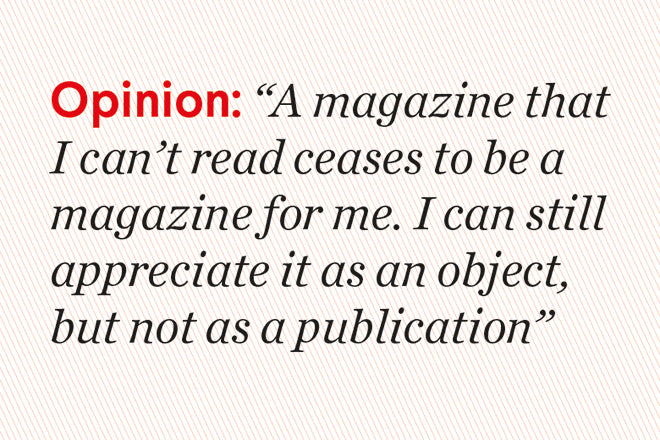
Foreign-language mags
We welcome a new guest contributor to the Journal today. Rob Alderson will be writing a monthly Opinion post, and starts with a look at whether it’s possible to enjoy magazines published in a language other than your own.
If you’ve ever worked in magazines, you’ve been asked The Question. Maybe by a well-meaning relative struggling for conversation, maybe in an interview on a fine site like magCulture, maybe (and most panic-inducingly) on stage during a Q&A session or a panel discussion.
Which magazines do you most admire? Which titles do you think are doing interesting things at the moment? I’ve asked it myself. I’ve answered it at least 50 times, with varying degrees of honesty.
There are four types of response to The Question:
1. Name something pretty mainstream
Say The New Yorker. Say Wired. Say The Evening Standard’s Friday magazine ES. This is a good way of showing you’re not too cool for school and that you’re all for credit where credit’s due. Some answers are so uncool they might even sound quite cool. What is it about the Evening Standard magazine this guy likes so much? I must remember to pick one up…
2. Name a well-known indie title
Here we’re talking answers like The Gentlewoman, Kinfolk and The Gourmand. Magazines that have been around for a few years and which radiate quality across both content and design. Best accompanied with a little shrug – I know it’s obvious but what can you do?
3. Name an esoteric indie
This is where things start to get serious. Choose a title that people won’t have heard of, thereby demonstrating your immersion in the indie magazine world and your erudite eye for printed excellence. If you’re a total hipster/wanker, act surprised when the person you’re talking to hasn’t heard of it.
4. Name a non English language magazine
This is the holy grail of answers, and makes those who opt for option three look like ill-informed amateurs. Such a magazine lover am I, it says, that my favourite magazines are ones I cannot read. You philistines who crave such base pleasures as comprehension will never understand.
I have certainly been guilty of numbers 1-3, but never have I strayed into 4 which leads me to a confession – I actually get very little out of magazines that aren’t in English. This obviously isn’t to say that there aren’t thousands of excellent titles not written in English, nor is it some sort of neo-Empire griping about people who don’t speak the Queen’s – it’s about how I personally engage with printed publications. Shamefully my language skills don’t extend much further than GCSE French (although I’ll be in business if anyone ever makes a magazine involving trips to the discotheque and eating delicious hamburgers with a pen-friend).
I think because I come from a journalistic rather than a design background, I have always been more interested in the written than the visual side of magazines. Nothing is more disappointing than a beautifully produced print publication that’s let down by sloppy, dull or cliched writing. I know there are lots of people who would take the opposite view; who’d get nothing out of a magazine full of beautifully written, engaging content that was compromised by pedestrian design or uninspired art direction.
It comes down to that combination that we all love about magazines – text and image, information and presentation – and the alchemy that occurs when they work in tandem. But as much as I can coo over cover foils and the inventive use of imagery in a non-English magazine, ultimately I am left frustrated by my inability to absorb the written content.
In fact I’d go further than this. A magazine that I can’t read ceases to be a magazine for me. I can still appreciate it as an object, but not as a publication. I was only really able to grasp the brilliance of ZeitMagazin when its publishers brought out Zeit International (which I know says more about me than it does about that particular title). While the international edition does add columns written specifically for its English-language audience, the majority of its content is (excellently) translated from the original weekly version. Christoph Amend and his team understood that there is a legion of readers locked out of loving their magazine by an inability to speak German, and the success of Zeit International shows they were right.
Obviously not all magazines are made for everyone, and the sheer eclecticism of titles – in different languages, covering different niches, presented in different ways – is a huge reason why this sector is so interesting. But I can’t live the lie anymore: I can’t get excited about that little-known indie written wholly in Swedish/Arabic/Thai. The Evening Standard ES magazine on the other hand…
Rob Alderson is a freelance writer and editor based in London. He was formerly editor-in-chief of It's Nice That and has written for various publications including The Escapist, The Green Soccer Journal and BBC.com


